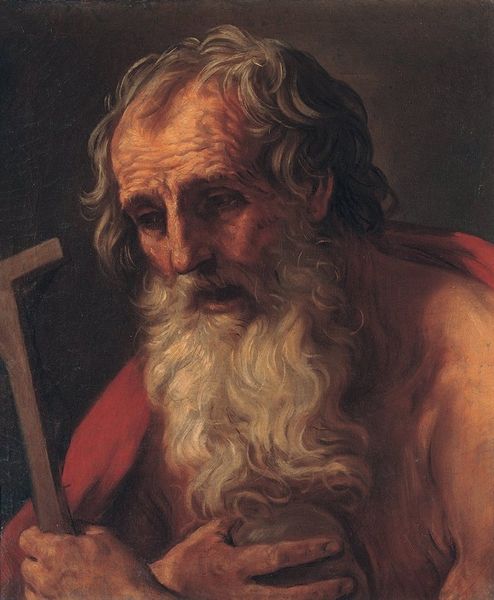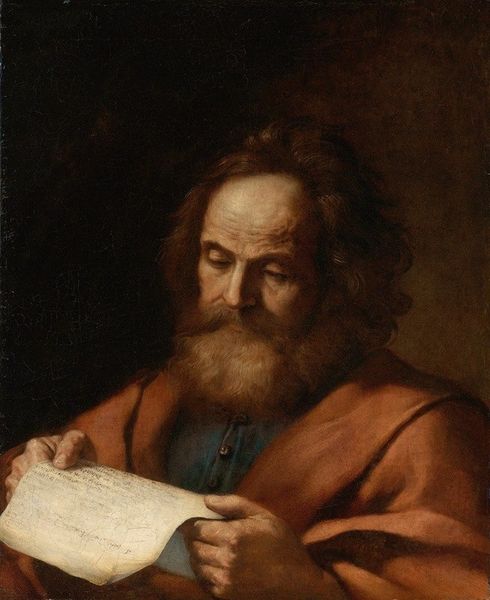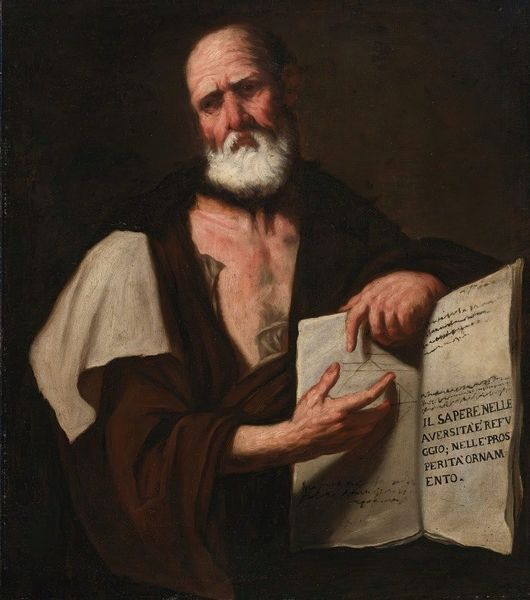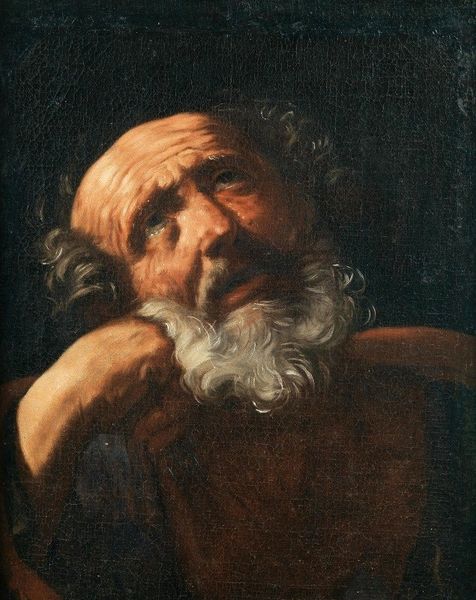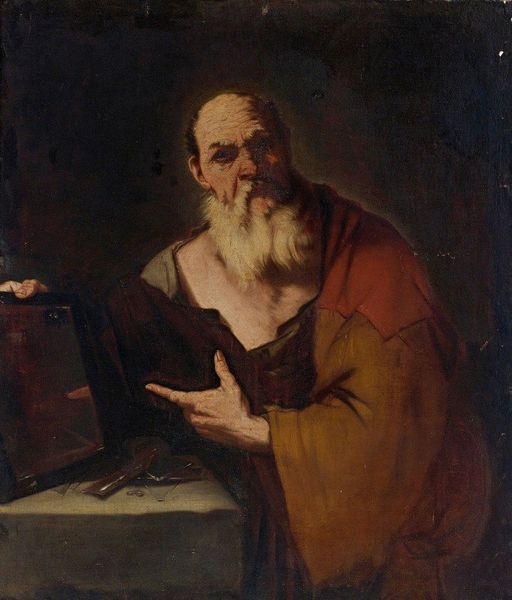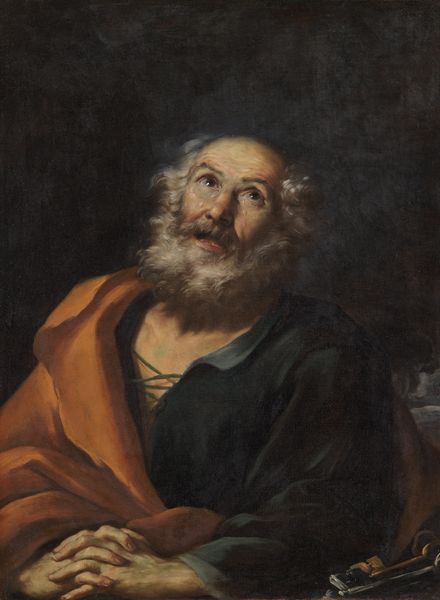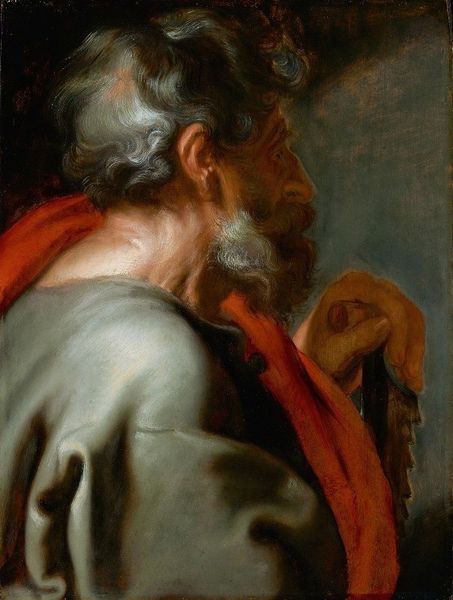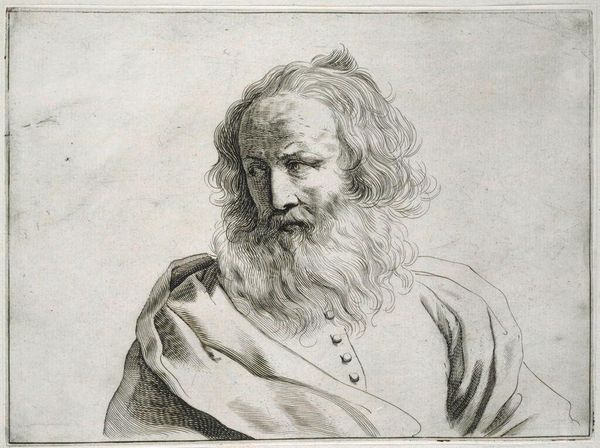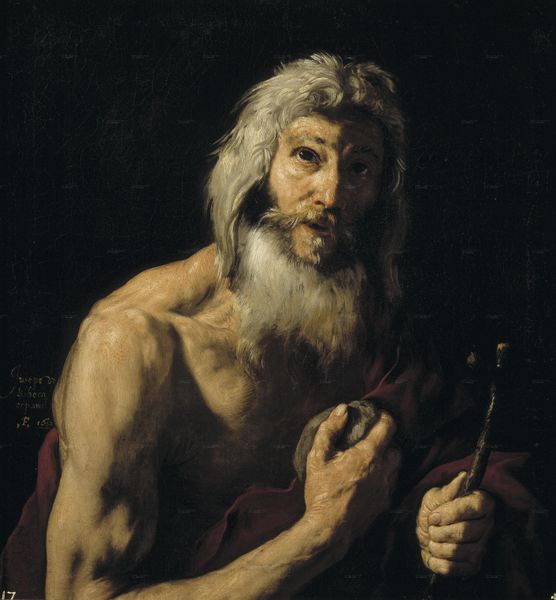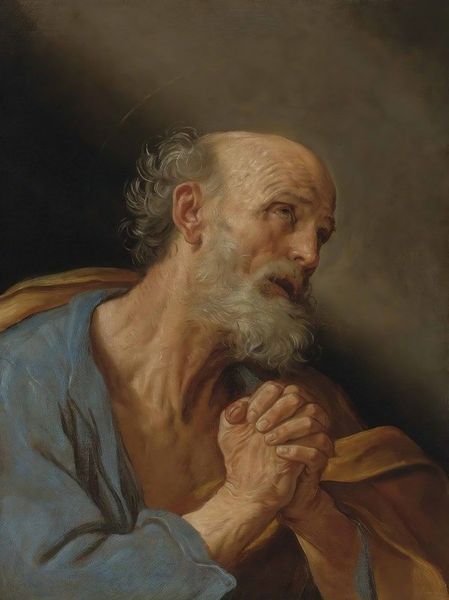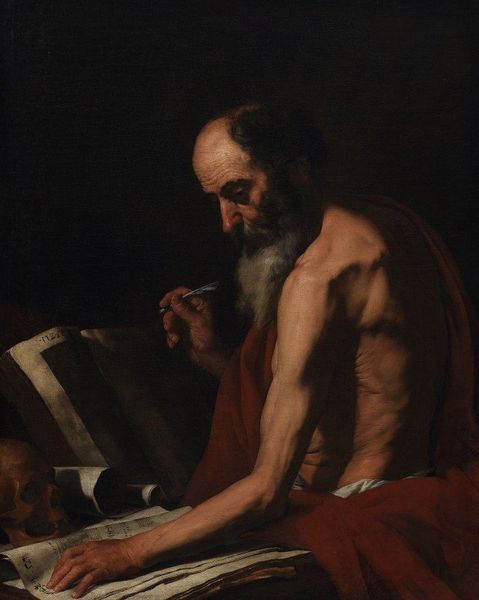
oil-paint
#
baroque
#
oil-paint
#
oil painting
#
christianity
#
history-painting
#
portrait art
Copyright: Public domain
Editor: We are looking at "Saint Mark," an oil painting by Guido Reni, housed in Palazzo Rosso in Genoa. The saint's absorption in his writing, captured in a tight crop, gives it a very intimate feel, wouldn’t you agree? How do you interpret this work? Curator: I find it insightful to look beyond the traditional hagiography. Consider the materiality: oil paint, canvas. Pigments sourced and ground, stretched fabric prepared – these are physical labors. Reni was, in effect, a manufacturer overseeing a workshop. Editor: So, the art isn't just the finished product, but also the labor? Curator: Precisely! The canvas and the colours were valuable commodities in their own right. Then there is the book itself. In this context, what does the book *mean*, materially? Not just as a symbol of divine scripture, but as paper, ink, binding—the product of many hands, connecting Saint Mark, the biblical author, with a very earthly industry of book production. The symbolic significance of St. Mark blends with a burgeoning economy of images. Editor: That’s fascinating! It reframes my understanding entirely. I always focus on the artistic skill… Curator: But even that skill is labor, honed through apprenticeship and practice, tied to patronage systems and the art market. What might the scale of Reni's canvas and paint processing tell us about the artist’s intentions and their connection with wider markets? Editor: So by analyzing the materials, we understand more about production processes and the historical art market? Curator: Exactly. Editor: I will definitely consider those relationships in future works. Thank you!
Comments
No comments
Be the first to comment and join the conversation on the ultimate creative platform.
